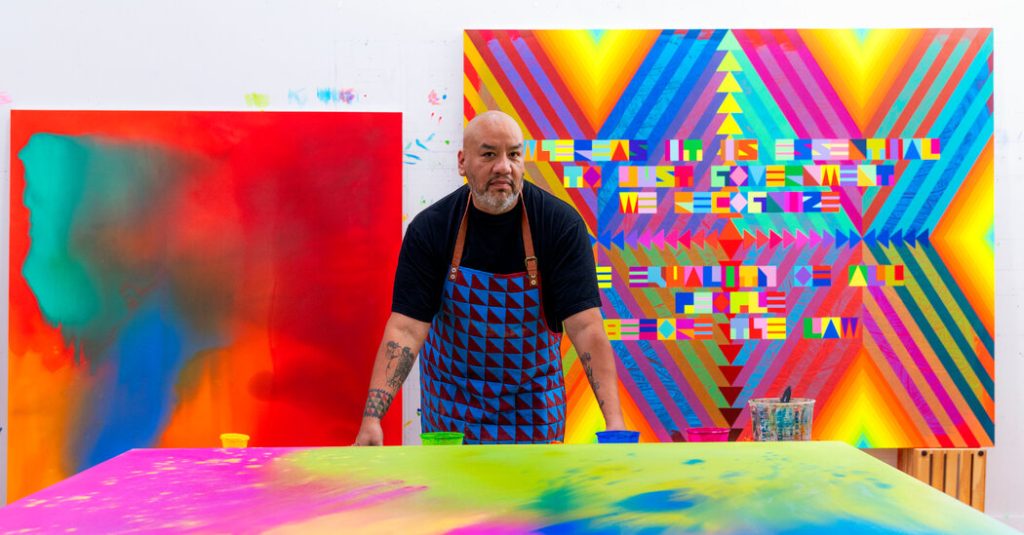On April 18, 26 intertribal Native American dancers and singers from Oklahoma and Colorado will perform the jingle dress dance in Venice, Italy, as part of the Venice Biennale. The jingle dress dance, originating with the Ojibwe people, will inaugurate the exhibition in the United States Pavilion by the queer Choctaw and Cherokee artist Jeffrey Gibson. The exhibition, titled “the space in which to place me,” features flags, paintings, sculptures, and a video filled with geometric patterns, beadwork, vibrant colors, and political references to Indigenous and American histories. Gibson’s complex relationship with the United States is reflected in his artwork, drawing on the displacement of his ancestors and the struggles faced by Native Americans.
Gibson’s selection to represent the U.S. at the Venice Biennale is a historic moment, as he is the first Native artist to have a solo exhibition in the U.S. Pavilion in the exhibition’s 94-year history. The project aims to interweave Native American narratives with other histories of struggle and freedom, drawing inspiration from Layli Long Soldier’s poem. Despite receiving limited funding from the federal government, Gibson’s team managed to secure additional support from foundations and proceeds from the sale of art to fund the exhibition, catalog, and public programming. Gibson’s exhibition comes at a time when mainstream institutions are paying more attention to Indigenous artists like Sky Hopinka, Nicholas Galanin, and Rose B. Simpson.
Gibson’s artworks at the Venice Biennale reflect his critical examination of American nationhood, drawing on constitutional amendments, social movements, and milestones in American history that promised equality and justice. His artworks feature phrases from historical documents, references to political events, and imagery that challenges Western art history’s emphasis on whiteness. Despite the political undertones, Gibson’s work contains layers of form and meaning, blending traditional Native objects, queer culture, and vibrant colors. His art celebrates freedom and seeks to challenge the dismissive attitudes towards colorful art that he encountered during his early career.
Gibson’s artistic journey has been shaped by his experiences growing up as a Native American and a queer individual, facing displacement, poverty, and discrimination. His art combines Western and Indigenous traditions into hybrid forms that celebrate freedom and invite introspection. Throughout his career, Gibson has strived to create inclusive spaces and foster collaboration, as seen in his interactions with jingle dress dancers and other practitioners. His art is a testament to the multifaceted nature of identity and an invitation to challenge fixed categories, embracing individuality and freedom. As Gibson looks to the future, he aims to continue experimenting and speaking for himself, embodying the ethos of his art in everyday life.


